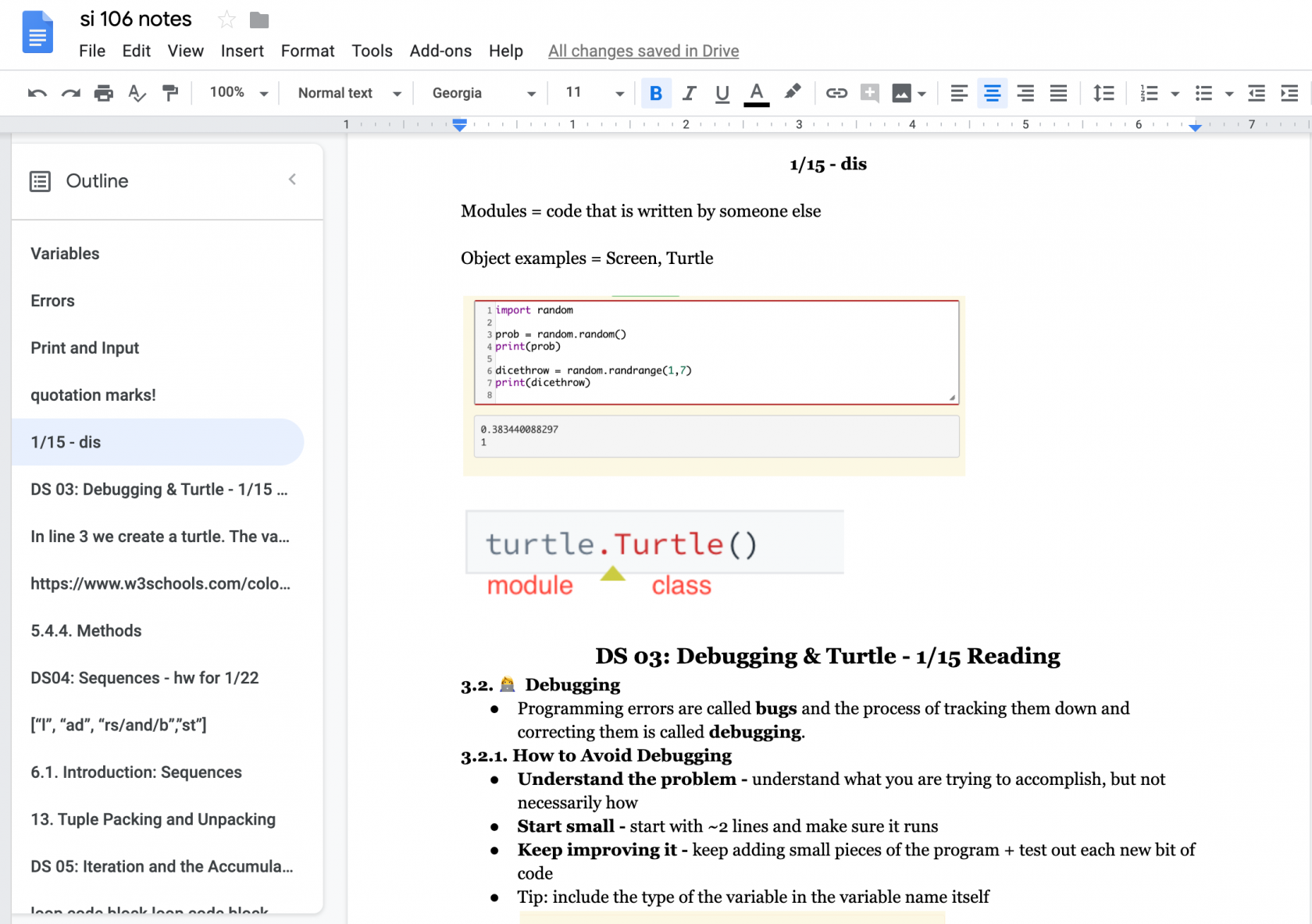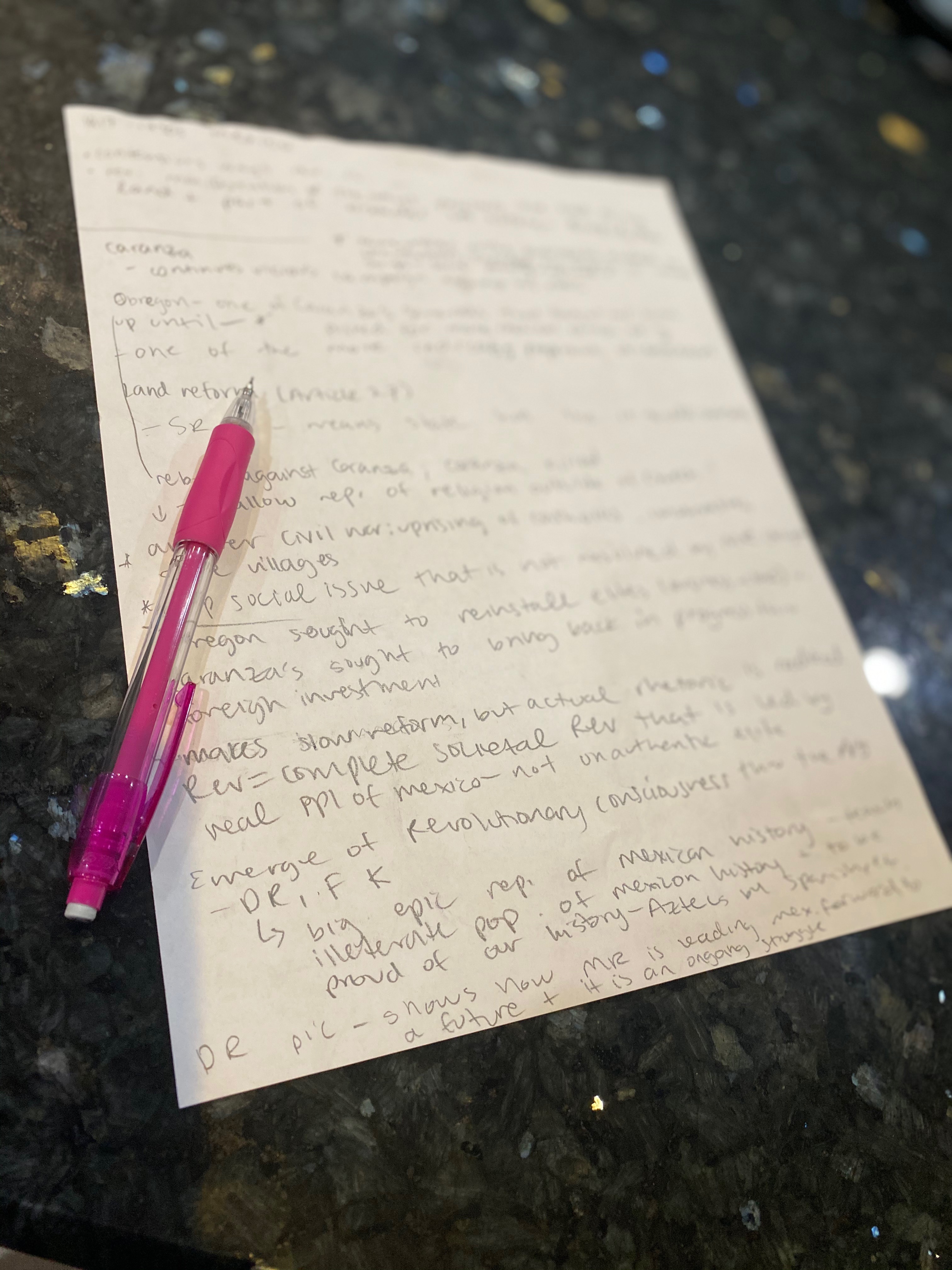Blog
Get the inside scoop about life at U-M and applying to Michigan from current student bloggers, Admissions staff, and guest faculty writers.

Get the inside scoop about life at U-M and applying to Michigan from current student bloggers, Admissions staff, and guest faculty writers.


When I first started at U-M, one of my biggest dilemmas was relearning how to take notes. My class schedule was a mix of introductory courses in lecture halls and smaller, discussion-sized classes geared toward first- and second-year students. I had some idea of what the note-taking should look like in the latter setting, but when it came to lecture halls, I was less certain.
It wasn’t that I didn’t understand the process of taking notes (knowing how to pick out the important parts, writing down things in your own words, and other mundane advice that most of us are fed in high

school and college). What I found more challenging was deciding on the right tools to use. It sounds dramatic, but I was torn between taking notes on my laptop or with paper.
At first, I would ardently write notes by hand in spiral-bound notebooks; however, I soon learned that it wasn’t always the most effective or helpful method. You’ve probably heard (or will hear by the time you get to college) that writing handwritten notes is scientifically the superior way to take notes in terms of memory and overall benefits. In practice, handwritten notes have their flaws – readability and the ability to edit them in the future to name a few.
Now that I’ve completed three-and-a-half semesters at U-M, I’ve adopted a flexible approach to writing notes. Basically, I don’t really care if I write notes on paper or computer, as long as I’m consistent with my approach for each class. For example, in my Latin American history class (History 348), I exclusively write notes on the lecture outlines we are handed in class, but in my introductory Python course (SI 106), I always type my notes. I’ve also ditched spiral bound notebooks in favor of loose leaf paper so that I have the ability to reorganize the order of my notes as needed and save paper.
I discovered that each course in college is structured differently and requires a different approach. There are some classes that don't permit laptops, so typing notes isn’t an option. Some professors post lecture slides that you can follow along with on your laptop, which makes typing more convenient. Others offer outlines that you can print out before class and fill out/refer to as you write notes. Because each course structure varies, sometimes your method of choice is just not a practical option.
All this is to say, the only sure way to know what method will work best for you is to try both. Don’t be afraid of changing the way you take notes in the middle of the semester if what you’re currently doing isn’t working. Ultimately, the decision should boil down to what will keep you organized and motivated throughout the semester.

Maryam Masood (she/her) is a senior in the College of Literature, Science, and the Arts majoring in Organizational Studies. During the year, she keeps busy managing the Michigan Refugee Assistance Program and working as a trainer at Rec Sports. Outside of class and work, she can most likely be found making another cup of coffee, procrastinating at the CCRB, or rewatching Kim's Convenience on Netflix.